Students are quickly turning to ChatGPT and other AI writing tools to finish assignments faster. To manage this tech shift in education, AI detection tools have emerged. Here are our candid thoughts on Passed AI.

The broad use of AI is raising worries in academia, mainly about misinformation and harmful applications. As students increasingly use AI in schools, the traditional way of doing things might change drastically. People may not fully grasp this yet. Governments, especially in the EU, see the need for rules.
AI writing tools like ChatGPT are becoming common in education. Some students use AI without getting caught, while others face false accusations from AI detection software. Neither outcome is ideal.
Educators, particularly at universities, value academic honesty. They find it challenging to keep up with rapid tech changes. ChatGPT, for example, launched just last November. It’s still quite new!
Many tools aim to help teachers spot AI-generated work. In this review, we’ll look at a newer one called Passed AI.
Why Is AI Detection Now a Hot Topic?
The rise of AI writing tools in the past year has led to a significant surge in AI-related plagiarism and cheating among students. This kind of dishonest behavior threatens academic integrity and weakens trust in online learning settings. Teachers may soon need to revert to using pen and paper!
I can’t emphasize enough how chaotic the education sector will become once this issue is fully recognized. The big difference between AI detection and plagiarism detection is that plagiarism detection is concrete and provides proof.
If you think someone has cheated or used another source for their work, plagiarism detectors can show you the exact source: this was copied from goldpenguin.org.
AI detection, on the other hand, doesn’t work like that. And that leads me to my next point…
AI Detection is Not Definitive
Before I talk about a handy tool for helping with AI-assisted student writing, I want to point out that these tools aren’t foolproof. You can’t say for certain something was entirely written by AI; it’s more of an educated guess.
Think about it—AI makes stuff based on its training data. If you ask ChatGPT the same thing ten times, you’ll see different versions (though some might be quite similar). AI detection works by looking at text patterns and variations to find similarities with AI-generated writing.
Take these results lightly, test several writing samples, and use more than one detector if you’re convinced AI was involved. Now, let’s dive into the review!
Passed AI Unbiased Review & Key Features
AI Detection and Plagiarism Checker
Passed AI combines two powerful detection tools into one: an AI Detector and a Plagiarism Checker. This makes it easy to use.
For spotting AI-created content, Passed AI uses popular methods from Originality AI. This detection tool has a 99% accuracy rate on GPT-4, making it reliable. You can read more in our detailed review of Originality AI.
Passed AI also has a plagiarism checker. When you scan your documents, you can check for plagiarism. You can turn off the AI detector and just use the plagiarism checker if you like, though other tools might be better for this.
You can check both AI and plagiarism at once…
Both tools give scores from 0 to 100% for results. A higher score shows a higher chance of AI-generated or plagiarized content. For plagiarized content, Passed AI shows the source website.
If you see “40% AI,” it doesn’t mean 40% of the article was AI-written. It means if you flipped 10 coins, 4 might show AI content. Many teachers think a percentage means that part of the article was AI-written, but this is misleading.
To test this tool, I asked ChatGPT 3.5 and ChatGPT-4 to write on two topics.
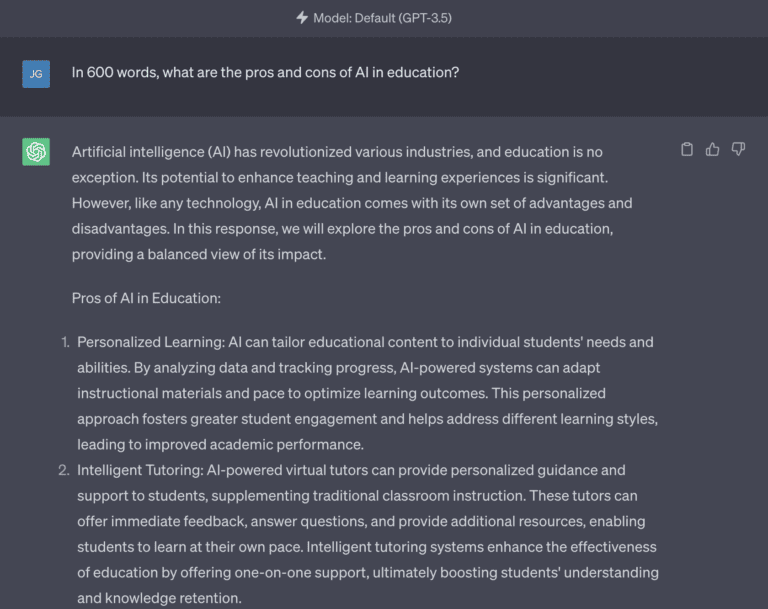
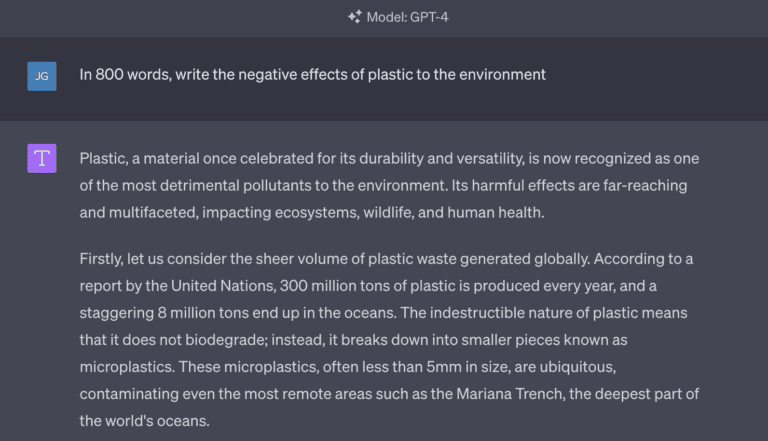
AI detection tools identified both pieces of writing as entirely generated by AI. This indicates with high certainty that AI was used to create the text. A tool only shows 100% when it’s absolutely sure.
Interestingly, I didn’t need to submit a full page of text to get a 100% AI detection result, which is great. Although, for thoroughness, it’s a good idea to check an entire text. For this example, though, this was sufficient.
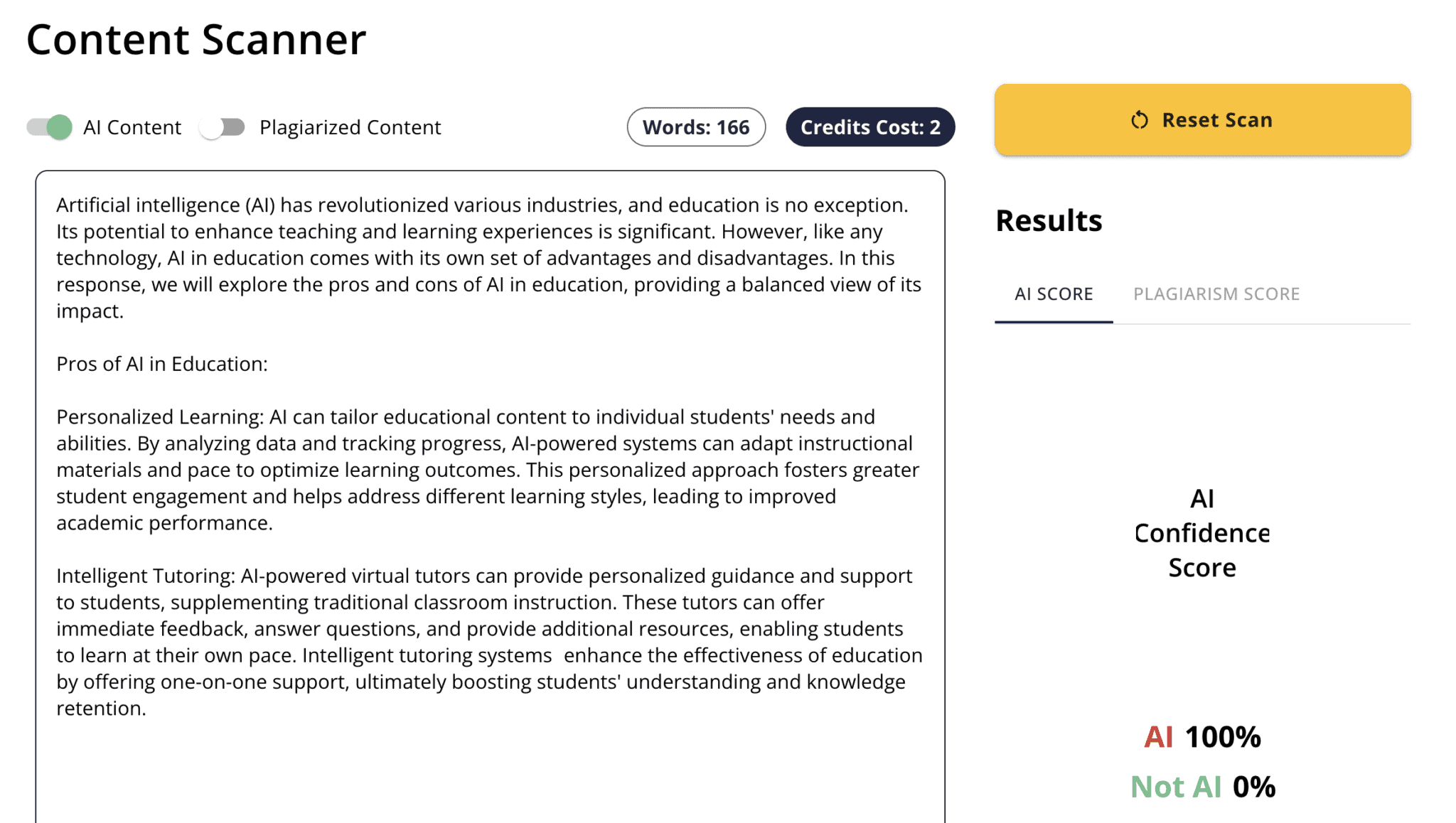
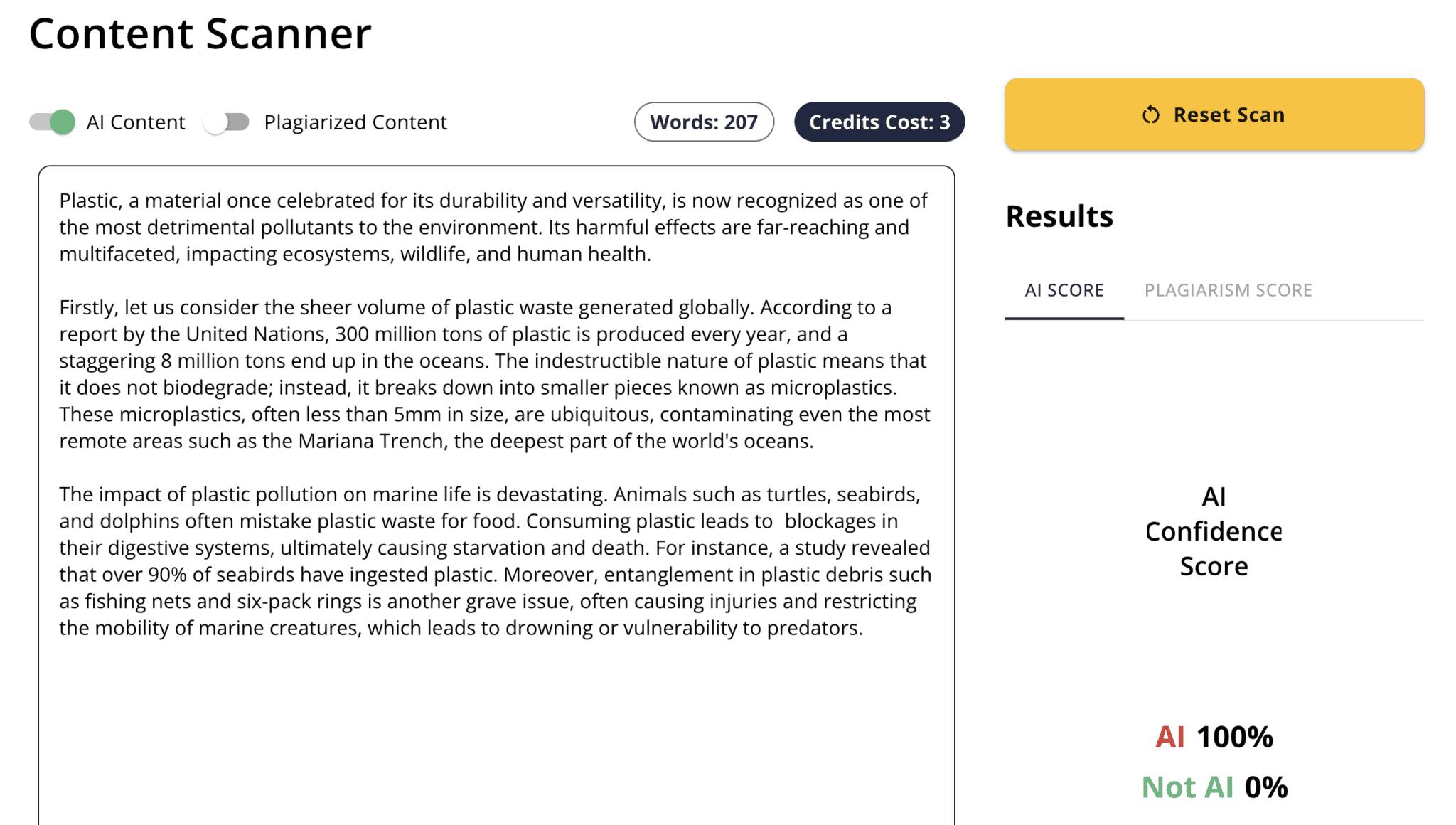
I wanted to check if Passed AI could tell if an article was original or copied from other sites, which is great for spotting plagiarism. I picked a 1,362-word article called “The negative environmental effects of plastic shopping bags” by Kelvin Chidi Ujeh from the IBA.
As predicted, Passed AI rated it as fully plagiarized, showing it was taken from the International Bar Association’s site.
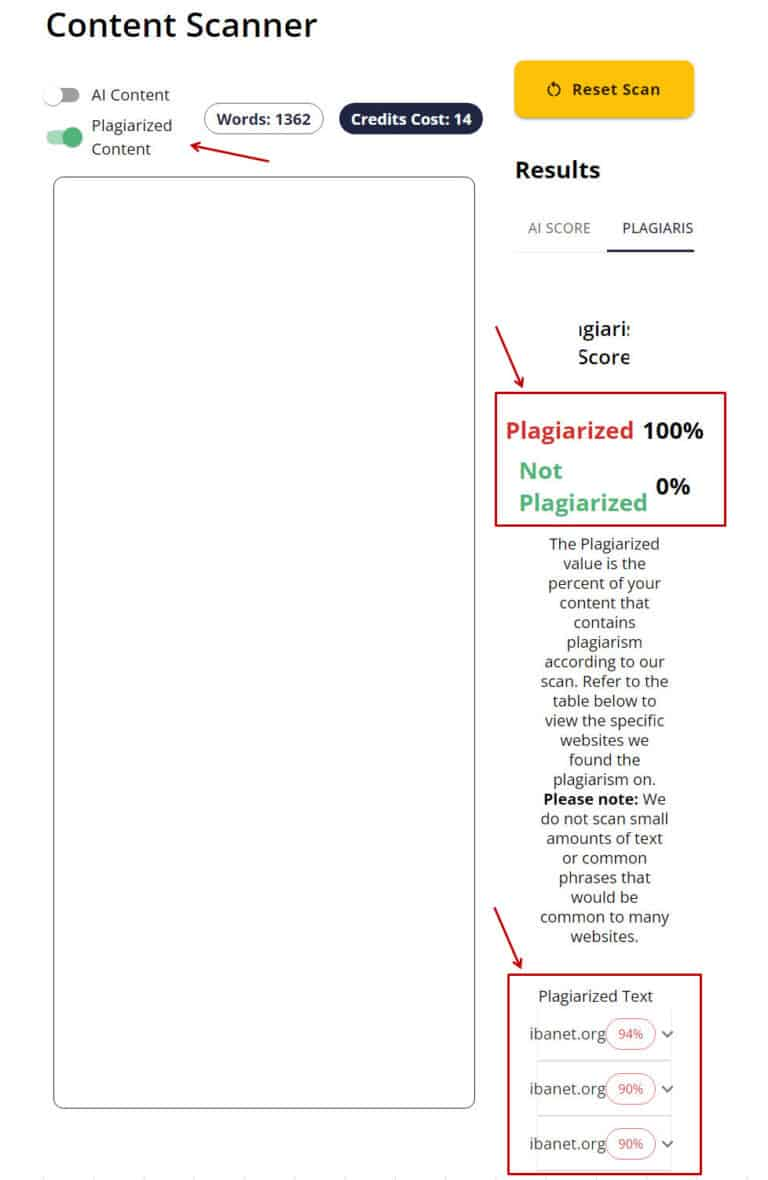
To spice things up, I checked a new blog post for AI detection and plagiarism at the same time. Passed AI said it was 98% AI-written and 7% plagiarized. It even pointed out the part that was copied and the site it came from. But, it didn’t show which blog the whole content was from.
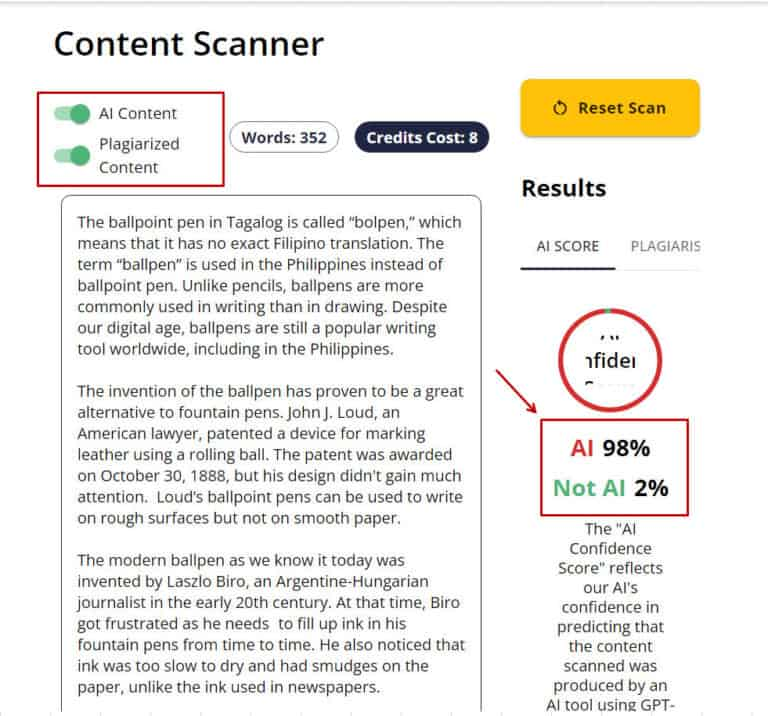
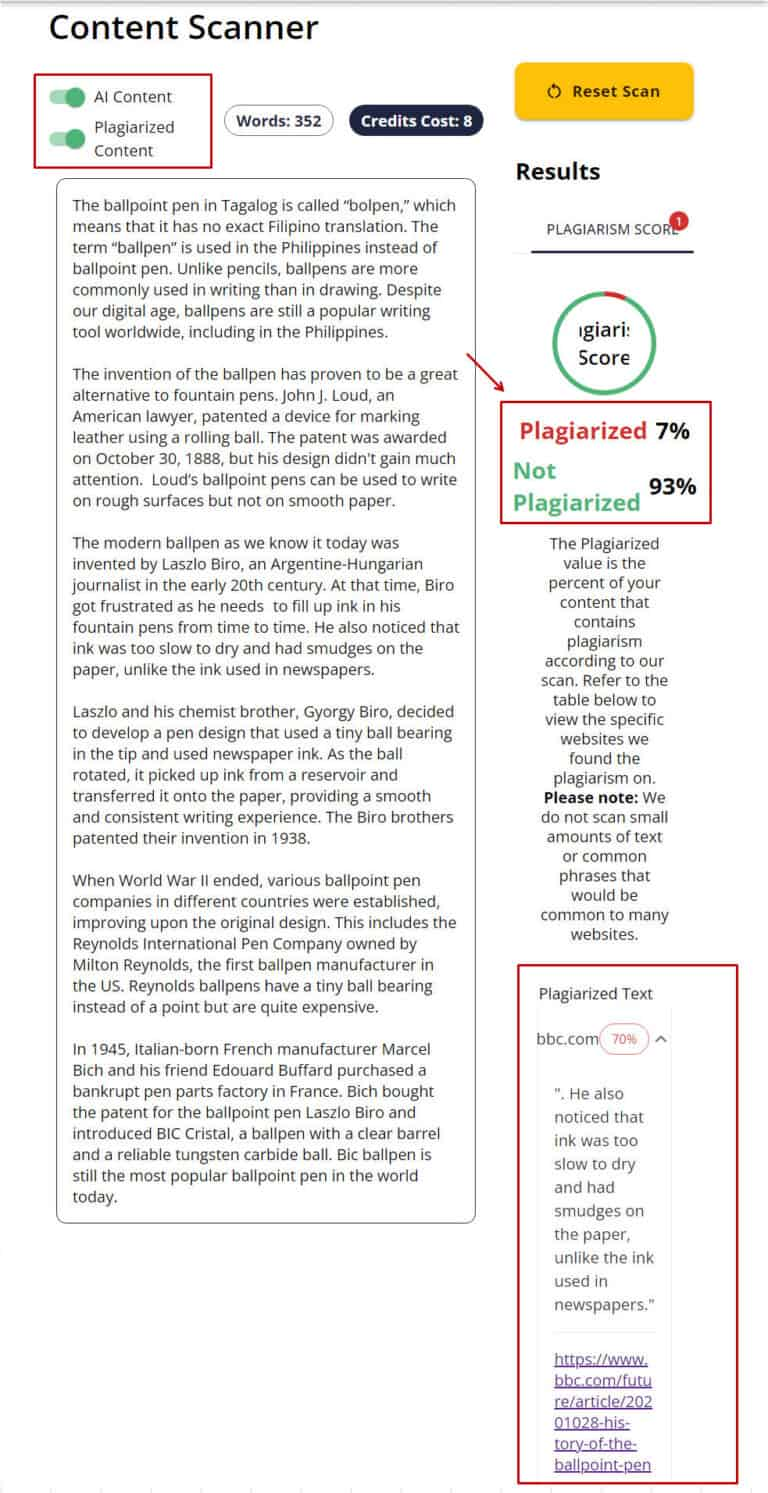
I tried using Copyscape Premium to check the same blog post. In my opinion, Copyscape is the top plagiarism tool I’ve used. It recognized that the writing came from the blog where I discovered it.
But, it couldn’t pinpoint the copied part or the original site. Copyscape looked at the whole text and didn’t bother with a line-by-line check.
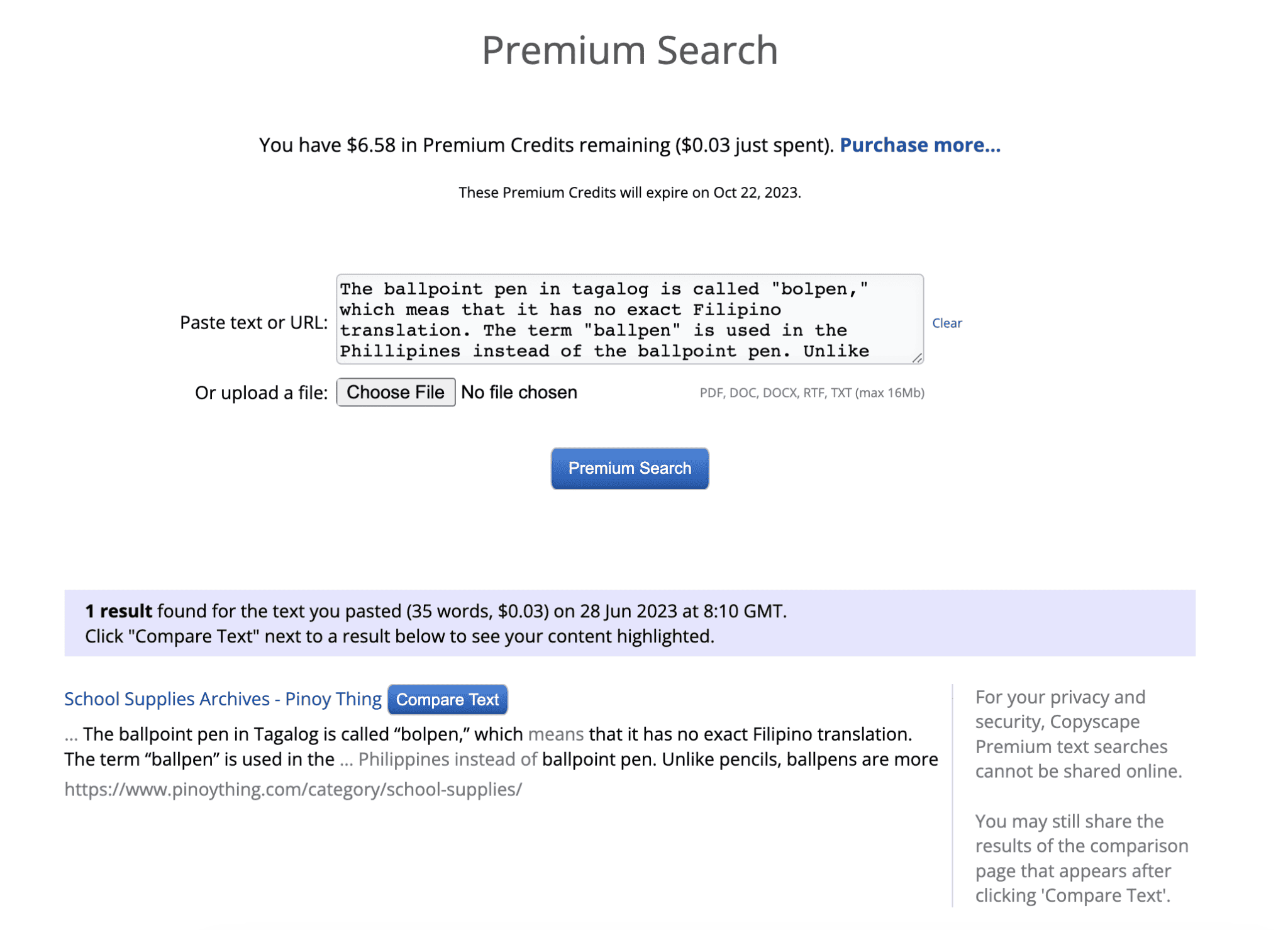
Google Chrome Extension
Passed AI provides an easy-to-use Chrome Extension that lets you apply it on Google Docs and anywhere else online.
Teachers can have students submit work using Google Docs and give editing permission. With access, teachers can open files and use Passed AI with one click. In seconds, it gives a detailed report.
I checked the same piece with ChatGPT-4. It got an AI Score of 99.99%, as expected. The add-on might be handy if you’re grading straight from a browser. I wouldn’t dig deeper unless the score is over 70 or 80%.
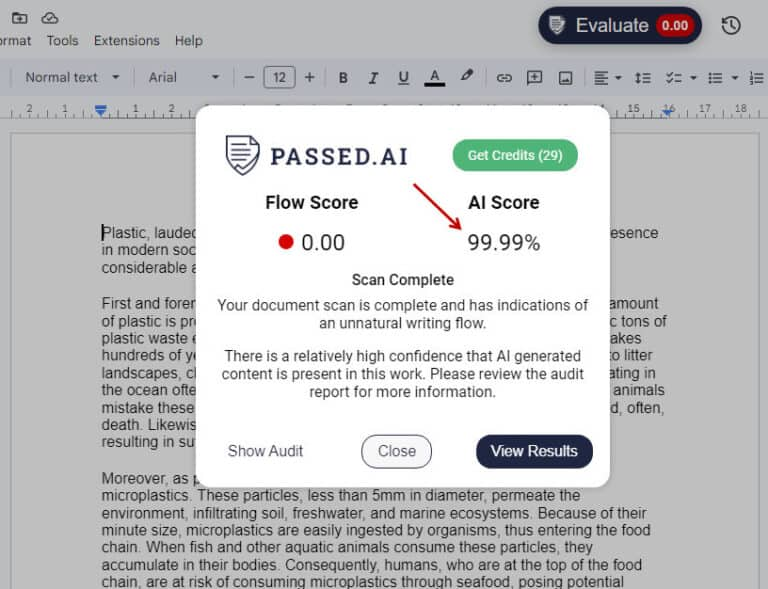
AI Generated, Human-Edited Writing
I tried to make the text smoother by editing what ChatGPT wrote. After tweaking it a bit, I ran an analysis.
The analysis showed a 95.44% AI Score, which is quite impressive. It’s great to see that edited AI content still scores high on detection. Changing AI-written text makes it tougher to detect.
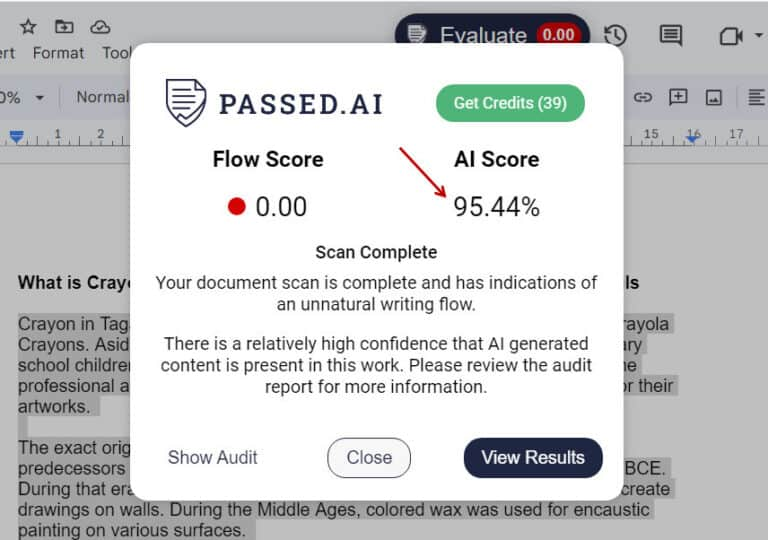
History Report
The Passed AI tool offers a useful reporting feature that gives a detailed account of the content analyzed. In this report, you can check different metrics that help assess the writing process. One of these metrics is the Flow Score, which looks at how naturally the writing flows. A score between 0.5 and 1 indicates that the writing seems more natural and creative. In my case, a score of 0.0 shows that the content might be heavily AI-assisted.
The report also tracks the number of Actions, showing how many edits were made during the writing. The Total Duration tells you how long these edits took. These metrics provide insights into how much editing and revising went into creating the content. Originality features some visuals that let you see how the writing was put together.
Additionally, the report flags Long Inserts, which are dubious additions to the document. As you scroll, you’ll find detailed info about these “long inserts,” allowing you to look more closely at sections that might need extra attention.
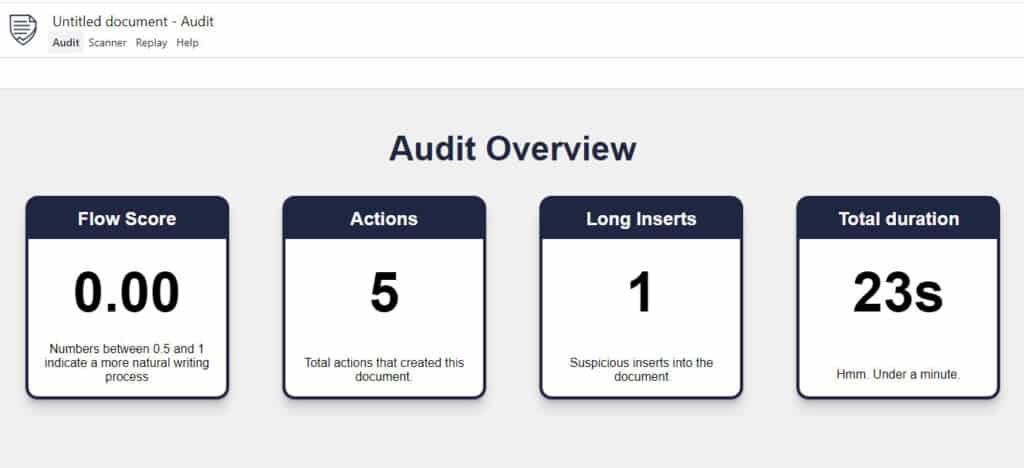
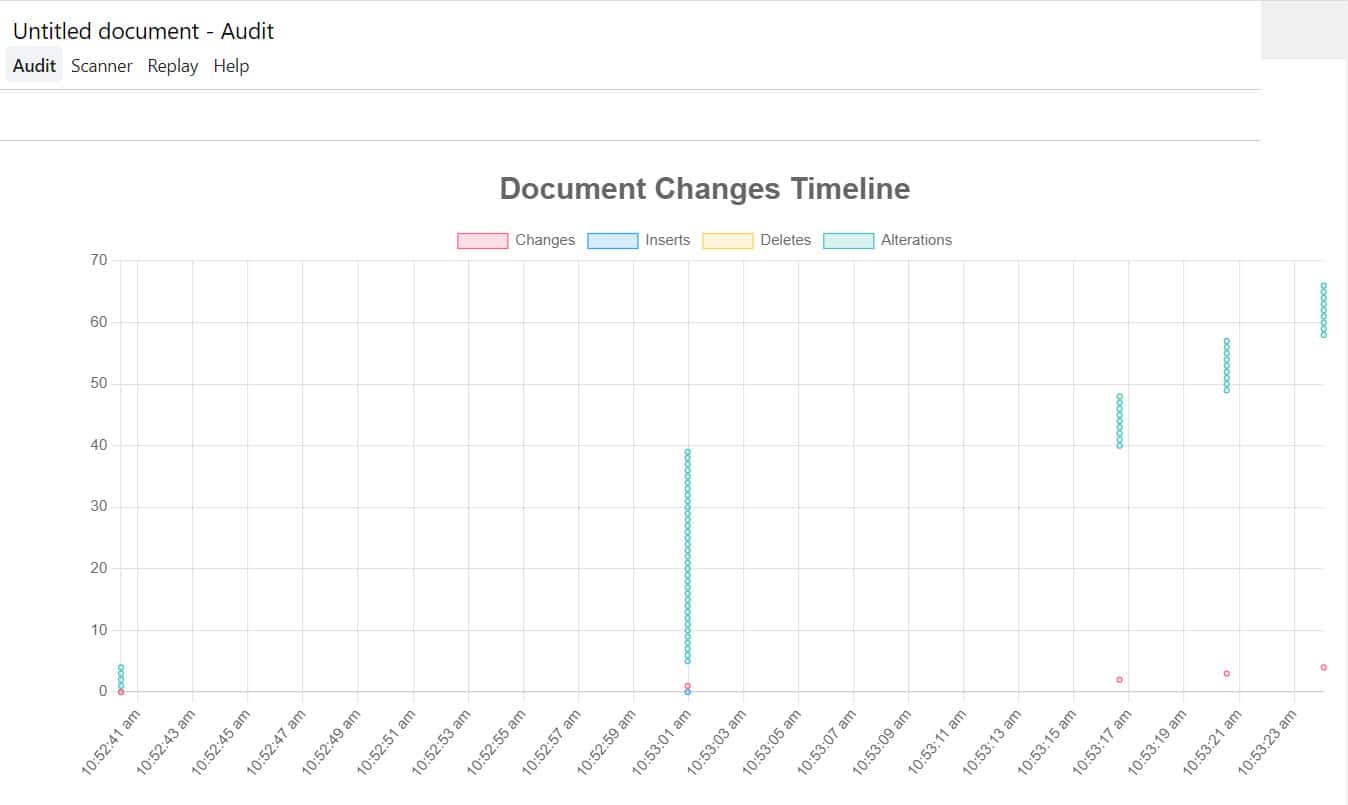
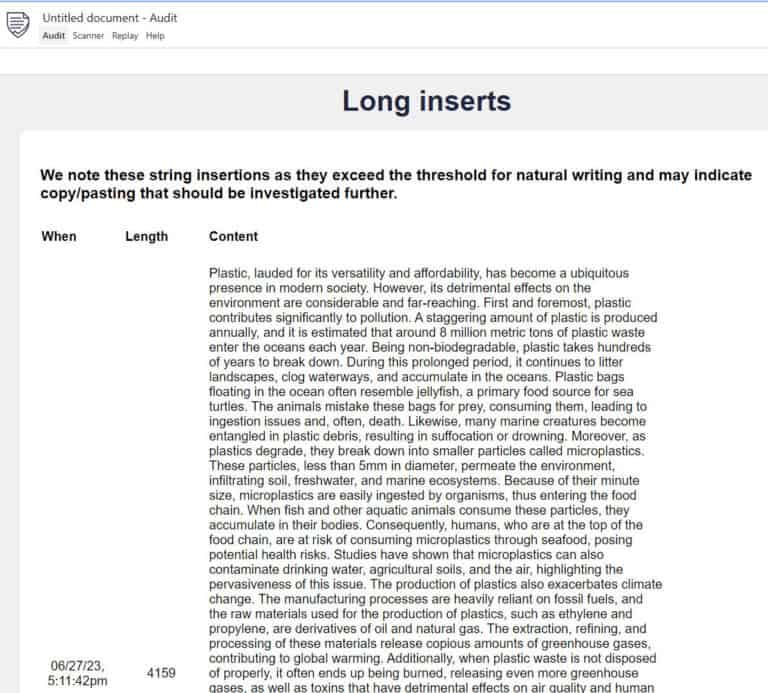
Document Audit
The Document Audit feature shows changes on a timeline in a simple, visual way.
You can see clearly when certain “inserts” happened and how long they stayed.
Plus, you can find out who made those changes, see their sessions, and know the exact start and end times for each session.
This lets you easily view the document’s editing history, helping you follow how revisions developed over time. It also helps you understand the teamwork involved and see what each person added if one document is used.
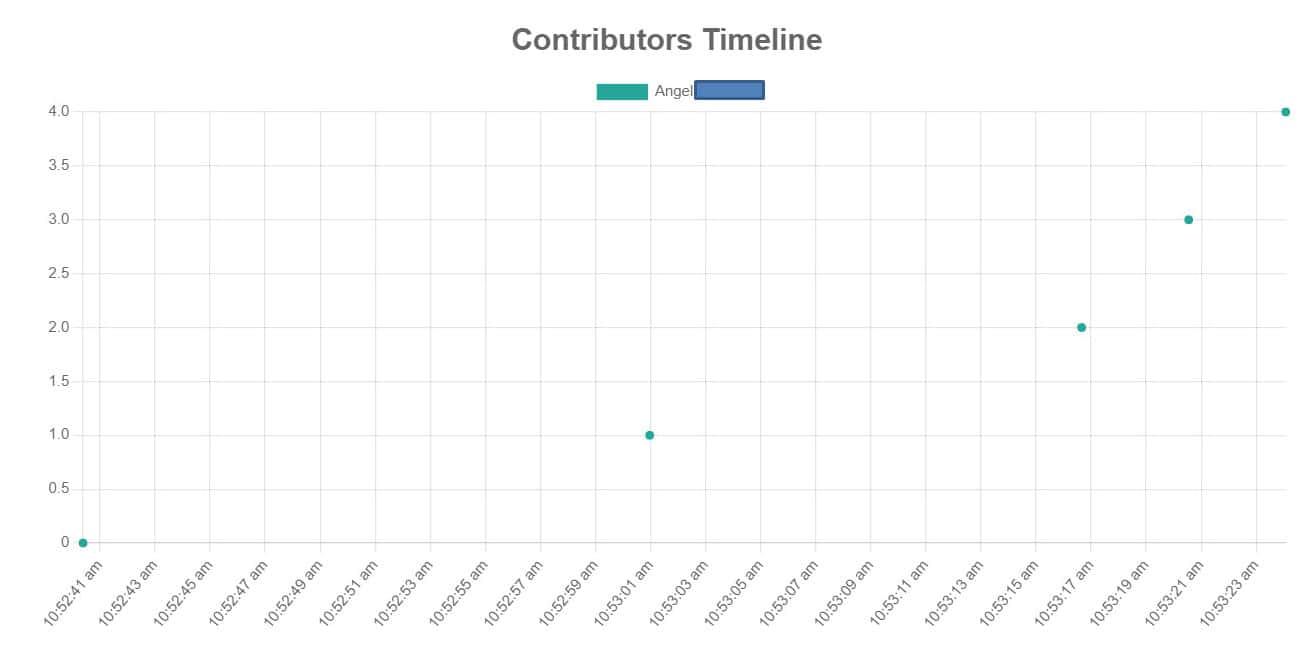
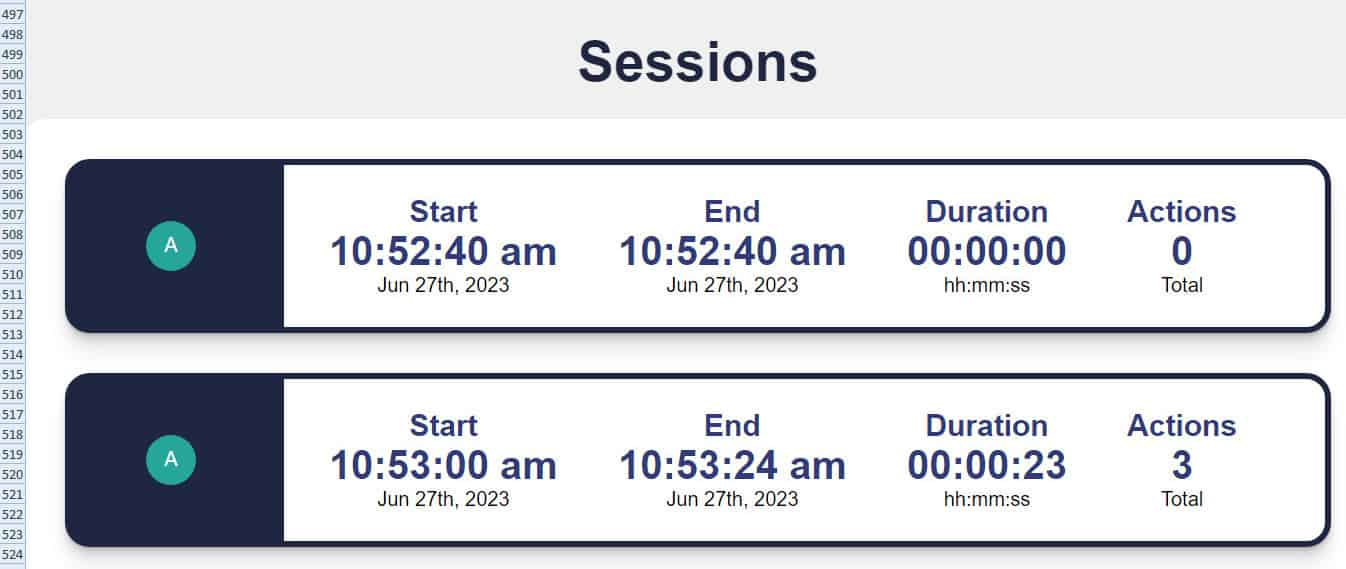
Replay Tool
The Replay Tool acts like a video player, letting you watch each part of making a document. You can play, stop, and start again whenever you want. This feature is super helpful because it lets you look closely at how the author writes and spot any odd copy-pasting easily. Some might say it’s even better than AI detection itself.
This tool gives you a lively and hands-on way to look at content, deepening your understanding of how it was made. Whether you want to check the text’s flow or find any sketchy copy-pasting, this tool makes it simple. It will retype the article in real-time, but
faster!
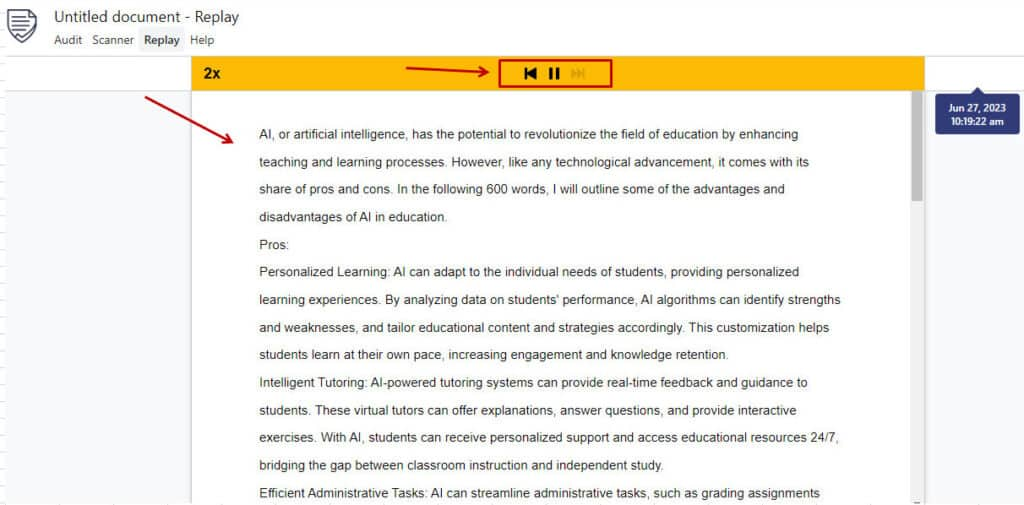
Passed AI Pricing
Recently, Passed AI updated its subscription options to be more wallet-friendly for those eyeing a premium plan. They now have a standard plan priced at $9.99 each month, with no strings attached!
With the Standard Plan, you receive 200 credits monthly, costing $0.10 per credit. These credits are for scans, useful for both AI detection and checking for plagiarism.
Each 100 words scanned uses up 1 credit. So, if you choose to do both AI detection and plagiarism checks together, it takes 2 credits per 100 words. It’s a cost-effective tool, but they keep credits and membership separate. You pay a fixed monthly fee for the membership and then purchase credits as needed.
A great perk of Passed AI is that your credits never expire. If you don’t use all your credits in one month, they simply roll over to the next. So, no worries! 😊

How to Add More Credits
To see how many credits you have, check the upper right side of your dashboard. If you need more credits, it’s simple to add them to your account.
- You can get 500 credits for $5, which lets you scan as many as 100,000 words.
- For $10, you get 1,000 credits, which lets you scan as many as 200,000 words.
- With $20, you get 2000 credits to scan as many as 400,000 words.
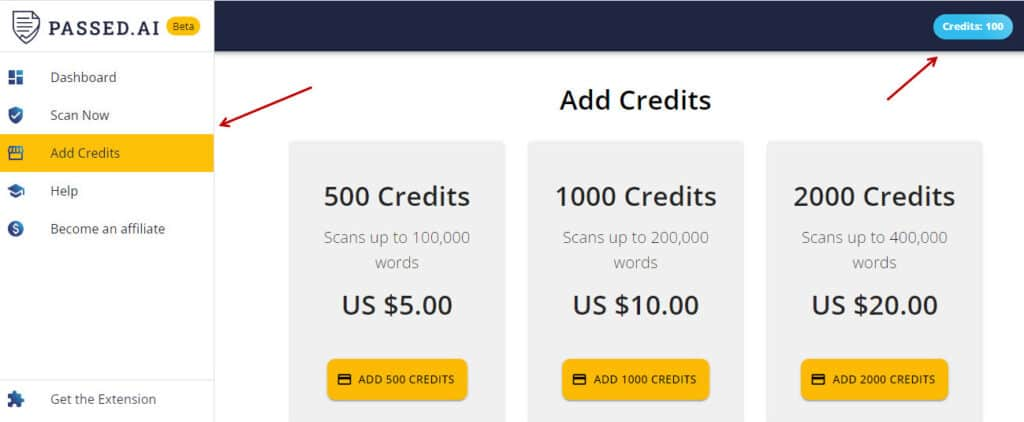
Passed AI gives you a 5-day free trial, but you need to enter your card info. They say you can get your money back if you don’t like it in the first 5 days, no questions asked.
Passed AI Pros and Cons
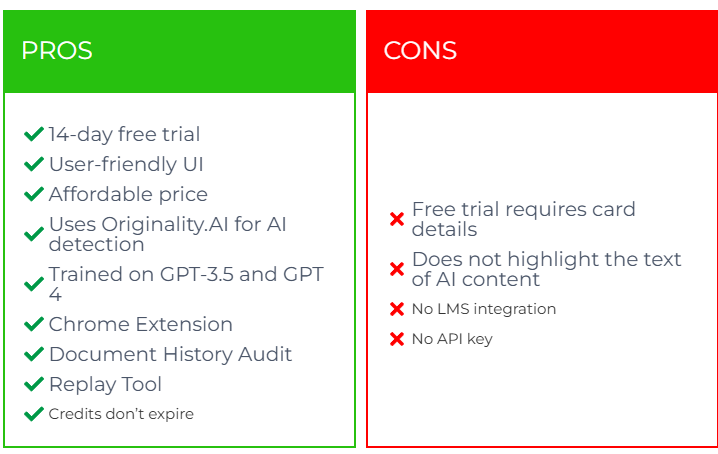
My Honest Thoughts
From what I’ve gathered, Passed AI seems to be a pretty strong tool for spotting AI-created and copied content. Its knack for pinpointing both types means it’s great for keeping things honest in schools and making sure work is original. Still, it’s wise to consider these findings as just one piece of the puzzle when checking for AI-written stuff.
Sometimes, genuine human writing might mistakenly get flagged as AI-generated. So, to avoid wrongly accusing students, it’s crucial to weigh all the aspects of writing before judging it as fake. It’s better to let a student slip by than wrongly blame them.
The results from the Chrome extension match those from the website, which is handy. You don’t really need the website if you have the extension.
Interestingly, Passed AI seems better at catching bits of copied content in older work compared to newer stuff. The Document History Audit and Replay Tool really boosts the analysis by offering deeper insights into someone’s writing.
With its budget-friendly pricing, Passed AI is a cost-effective option for AI detection and plagiarism spotting. Given its accuracy and features, it’s a sound investment. But don’t just rely on my opinion—try their 5-day free trial to see if it suits your needs and institution.
